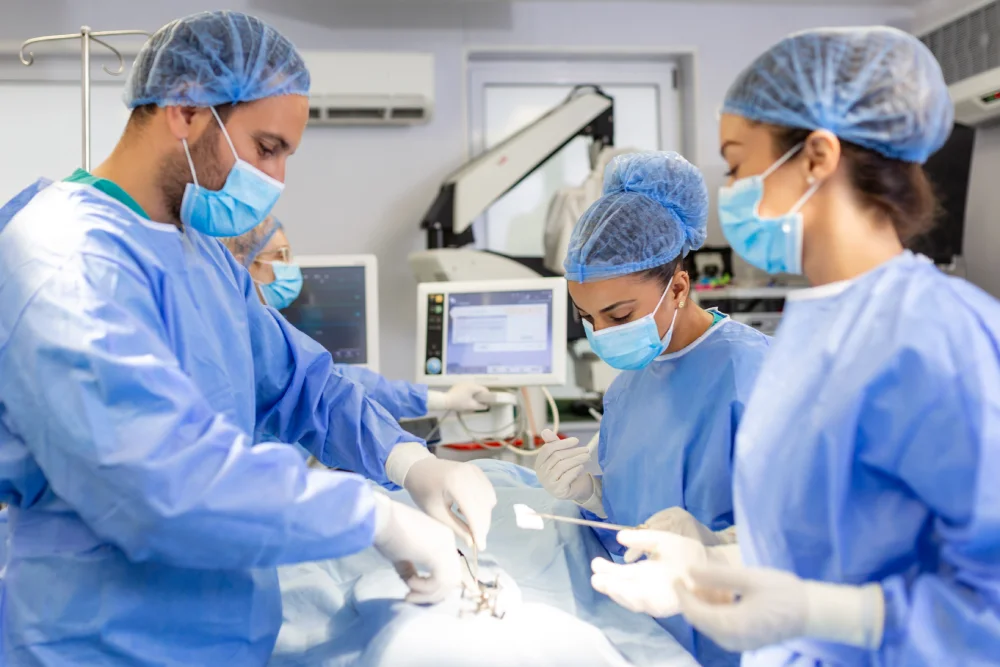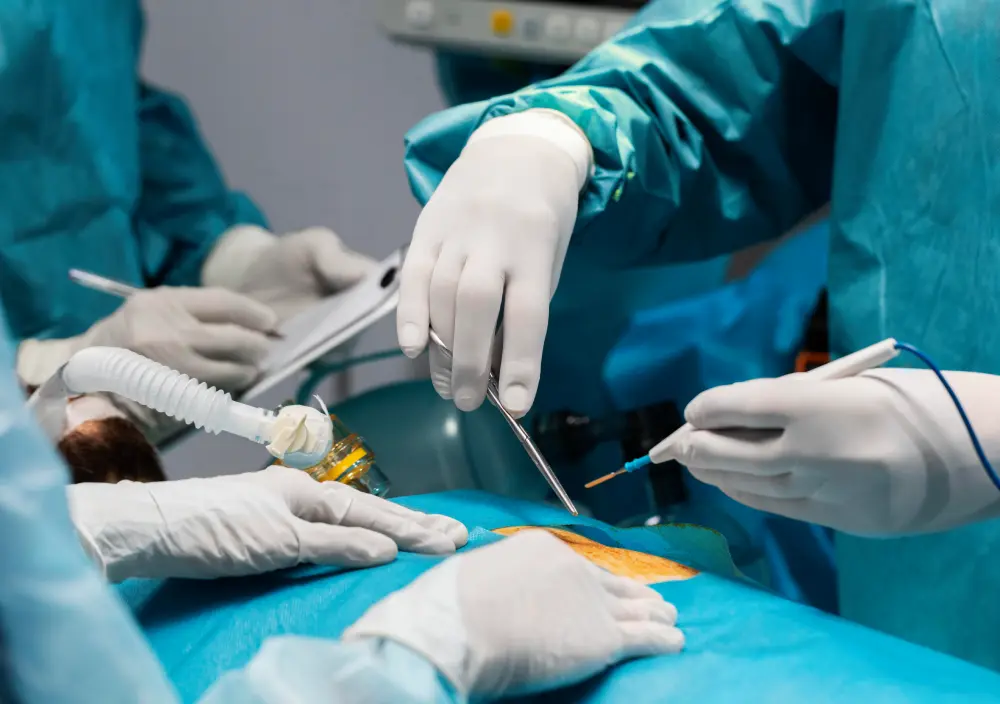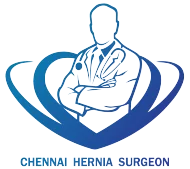Spigelian Hernia
Heal Your Hernia Today!
Heal Your Hernia Today!
About Spigelian Hernias
A Spigelian hernia is a type of abdominal hernia that occurs along the Spigelian line, which is a horizontal line that runs parallel to the rectus abdominis muscle and is located on the lower part of the abdomen, between the belly button and the pubic area. Spigelian hernias are relatively uncommon and can be difficult to diagnose because they occur in a narrow area between the abdominal muscles and may not produce visible bulging or protrusion.
Causes
Spigelian hernias are typically caused by a weakness or tear in the abdominal wall, which allows abdominal contents, such as fat or intestines, to protrude through the muscles and form a bulge or lump. They may occur spontaneously or as a result of physical strain or injury.

Symptoms

Symptoms of a Spigelian hernia may include pain or discomfort in the lower abdomen, nausea, vomiting, or constipation. In some cases, a Spigelian hernia may be asymptomatic and only discovered during a routine physical exam or imaging test.
Diagnosis
The diagnosis of a Spigelian hernia may involve a physical exam, imaging tests such as ultrasound or CT scan, or a diagnostic laparoscopy, which is a minimally invasive surgical procedure that uses a tiny camera to examine the abdominal cavity
Treatment
The treatment of a Spigelian hernia typically involves surgical repair, which may be done using traditional open surgery or minimally invasive laparoscopic techniques. The goal of surgery is to repair the weakened abdominal wall and prevent the hernia from recurring. Recovery time after surgery may vary depending on the size and severity of the hernia, but most people are able to resume normal activities within a few weeks after surgery.

Surgical repair
The surgical repair of a Spigelian hernia is generally considered to be safe and effective, with a low risk of complications. Most patients are able to return to their normal activities within a few weeks after surgery. There are two main surgical approaches for repairing a Spigelian hernia: open surgery and laparoscopic surgery.

Open surgery
In open surgery, a single incision is made near the hernia to access and repair the defect.

Laparoscopic surgery
In laparoscopic surgery, several small incisions are made and a laparoscope (a thin, flexible tube with a camera) and specialized surgical instruments are used to repair the hernia.
Facts about Spigelian Hernia
- Spigelian hernias are relatively rare, accounting for only about 1-2% of all abdominal hernias
- Diagnosis of a Spigelian hernia typically involves a physical examination, medical history, and imaging tests such as ultrasound, CT scan or MRI.
- Diagnosis of a Spigelian hernia typically involves a physical examination, medical history, and imaging tests such as ultrasound, CT scan or MRI.
- If left untreated, a Spigelian hernia can lead to more serious complications such as bowel obstruction or perforation, which require immediate medical attention
- Small, asymptomatic Spigelian hernias may be monitored over time to ensure they do not grow or cause complications.
- Overall, early diagnosis and treatment of Spigelian hernia can result in better outcomes and a faster recovery.
